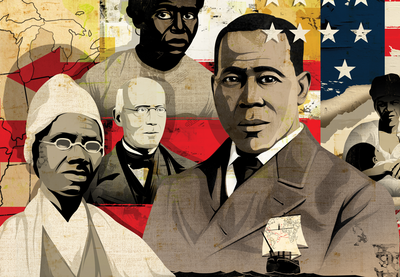Students should understand that slavery and race are intimately connected, that slavery came to be associated with blackness, and that white people developed racist ideas to justify enslaving people of color.
What Else Should My Students Know?
8.A Differences, whether real or perceived, can make some people feel that it is OK to treat others badly, to exploit other people and to believe that some people are better than others.
8.B The power of ownership and enslavement made people feel that their perceived superiority was real.
8.C Enslavers punished and tortured people because they felt superior and wanted to make money.
8.D Perceptions of racial differences remain in the United States today. These perceptions continue to impact whether all people are truly free.
How Can I Teach This?
- Students should consider how people perceive differences and the ways that these perceptions can become prejudices. Activities including examining portraits and creating paper plate portraits will help to make these conversations concrete.
- Books such as The Skin You Live In, The Colors of Us, Let’s Talk About Race and Red: A Crayon’s Story provide accessible entry points to engage students in conversations about the social perceptions of and construction of race.
- A series of lessons about the “Different Colors of Beauty” offers concrete and age appropriate activities to support examination of skin color and diversity.
- Students should learn that slavery was not always a function of race. Students should also learn that many Indigenous people and Africans were enslavers before (and, in some cases, after) European invasions and that older practices of slavery were not racialized.
